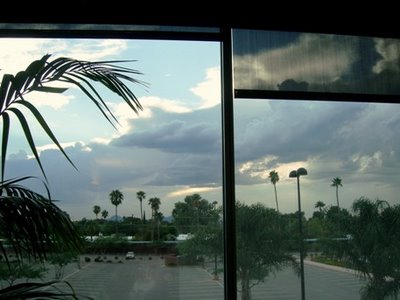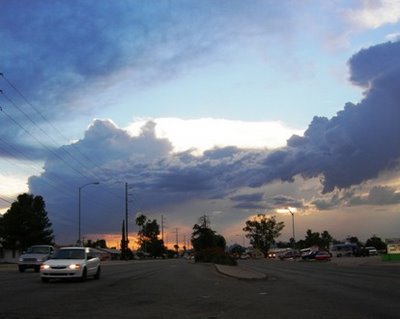Take, for example, the person who claimed a few weeks ago that Snoopy was originally depicted as brown and white instead of black and white. Here's what this person added to the Wikipedia article on Snoopy:
The original Snoopy books although printed in black and white fetaured colour front covers and show Snoopy as a brown beagle. After the comics went into colour, Snoopy was left Black and White - an oddity as these are not colours that Beagles come in.
Interesting theory, right? Problem is, it's demonstrably false. One editor who keeps a close watch on the article deleted this reference, with a note in the edit summary, "That sounds like baloney to me." When someone else put it back in, "Chowbok" took the trouble to refute the story on the article's Talk page:
I don't believe this is true. See the first three Peanuts books here. The first one's cover was black and white, the second one was color but did not feature Snoopy, and the third one was color and showed Snoopy as white. Please do not re-add this without supporting evidence.
and
Someone else chimed in with a further bit of info:
Also, Snoopy was based on Schulz's dog Spike, who was mostly white with a few black spots, so it would make sense if Snoopy were colored white right from the start. See this image.
If Snoopy was never brown, why did anyone think otherwise? I think the key is in this phrase: "these are not colours that Beagles come in." Everybody knows that beagles are brown. If Snoopy isn't brown, either he's not a beagle, or someone screwed up somewhere. Or so the theory presumably goes.
That was the end of it for a while, but then, a few days ago, someone changed the initial description of Snoopy from
Snoopy is the name of Charlie Brown's pet beagle in the long-running comic strip Peanuts, by Charles M. Schulz.
to
Snoopy is the name of Charlie Brown's pet beagle-mix in the long-running comic strip Peanuts, by Charles M. Schulz.
Chowbok and everyone else let this edit stand for five days, although other changes were made to the article in that time. Finally someone took it out, stating, "There is no evidence that Snoopy is not a purebred beagle." This is true, as far as internal evidence goes. Snoopy is consistently called a "beagle" for most of the strip's run, and it is never implied that he is of mixed breed. Indeed, one would expect that a dog from a breeder, the Daisy Hill Puppy Farm, would be an AKC purebred dog. But this runs afoul of what people know about beagles in the real world. They don't look like Snoopy. They are brown and black and white, not white with black ears and spots. It seems likely that this edit, like the brown Snoopy edit, comes from a dog fancier who wants to set the record straight on the characteristics of real-world beagles.
I mentioned all this to John tonight. Although John is as much as dog person as I am, he couldn't imagine being so obsessive about dog breeds as to make these sorts of edits to a Wikipedia article. When I pointed out that Snoopy doesn't look much like a real beagle, John pointed out that Charlie Brown doesn't look like a real human, either.
Also, I have it one good authority that real beagles don't battle the Red Baron from atop their dog houses.

Similarly, on August 22nd, someone from an anonymous IP (as opposed to a registered user of Wikipedia) edited the paragraph about the Madeleine L'Engle character Mrs Who to say the following:
Mrs Who
Mrs Who is described as being a plump woman with giant spectacles. She is often seen quoting in different languages such as Latin, Spanish, German, Seneca, and a variety of others. She also quotes William Shakespeare repeatedly. Mrs Whatsit explains that Mrs Who finds it "difficult to verbalize" in her own words.
Do you see the problem with that? Mrs Who quotes in Latin, Spanish, French, Italian, German, and even Greek, but she doesn't quote in the language of the Senecas, an Iroquois tribe from western New York. Mrs Who quotes an historical figure, Seneca the Younger, in Latin, and then translates. Perhaps the person who put this in, twice, should be forgiven for making this mistake. His or her other edits show a level of illiteracy I associate with kids. But anyone who actually looks at that page in the book should be able to see that the quote is not written in a Native American language or dialect."Ab honesto virum bonum nihil deterret. Seneca. Nothing deters a good man from doing what is honorable."
So when I took out the Seneca reference, I explained why. Maybe it will do some good.
While I was at it, I took a look at the article on the Senecas. It was a horrible mess. Right in the body of the article itself, which had a section header "Contact with Colonial Minded Oppressors" and was heavily peppered with "citation needed" tags, were remarks like this:
[I find this next section offensive and abusive. As a Seneca, I do not feel that this is "one of the most significant features of the Seneca Nation!" Please read the rest of this with caution as in my opinion it is written by an individual that is anti-Seneca. Thank you.]
What follows is a fairly neutral account of a wrangle between the Seneca Nation and New York State Attoney General over legal issues surrounding the sale of cigarettes.
Now, I'm not in a position to fuss with that article (an admission for which I'm sure John is grateful), since all I know about the Senecas I learned in seventh grade social studies over 35 years ago. But it looks an awful lot to me like the work of people who have a strong interest in one particular point of view, who see anything outside the party line as offensive and an attack. On the other hand, for all I know there may be serious factual errors in the article, and selling cigarettes probably should not be called "one of the most significant features" of the Seneca Nation. I hope someone can mediate a resolution and get the article under control, but fortunately it's not my problem.
I don't even have to worry about a similar wrangle in the Tucson article, about whether the O'Odham origins of the name Tucson should be mentioned in the first sentence (or paragraph) of the article. The discussion of this on the talk page goes on and on. Fortunately for me, however, the question was apparently settled back in 2004.
I did take a look at another Tucson-related page today, the one on Old Tucson Studios. It seems odd to me that the article doesn't mention even the possibility that the fire that nearly destroyed the place in 1995 was due to arson. (The Tucson article states this as a fact.) I suspect that this has more to do with avoiding the possibility of a lawsuit than any real doubt that the fire was probably set. However, I'm fairly certain that no one was ever charged with a crime in connection with the incident. I didn't fuss with it, but I did add links to the articles on a bunch of the movies that have been made there.
With all the Tucson-related articles, I've been considering the possiblility of uploading a few of my photos to Wikipedia. However, I'm not sure of the rights situation. For example, I had permission to take this picture of an Old Tucson cast member. Does that mean that it's fair use to post it? I'm not sure. I'm not too worried about using it on my blog, but a high profile posting on Wikipedia is another story.
One more thing I want to bring up here in this horribly long post before I get to bed, I hope before 5 AM (it's 4:44 now). I got some good cloud pictures on Friday, but it didn't rain until today. Now it's hot and muggy again. Friday the high was 100 degrees. Nope, summer's not over yet!
Karen
P.S. I did write an installment of The Jace Letters tonight.




1 comment:
The whole Snoopy debate just cracks me up!! Not to add fuel...but, isn't Snoopy also freaquently referred to as a mutt? That may just be Lucy being insulting or Peppermint Patty using a term of endearment. ;-)
Post a Comment